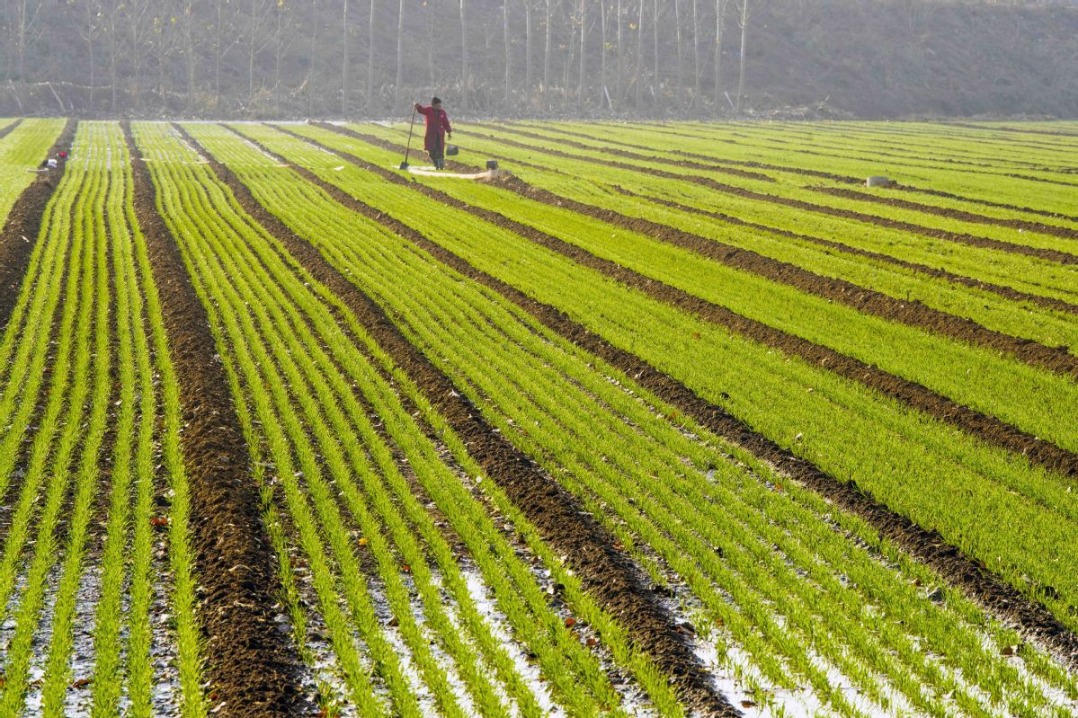Benefits of mass endeavor flow in many directions


While the water of the South-to-North Water Diversion Project flows in a single direction, its ecological and environmental benefits are widely distributed, impacting both upstream and downstream regions.
Over the past decade, the project has not only met the water needs of North China but has also replenished numerous rivers and lakes along its eastern and middle routes, contributing to greener and cleaner cities. Its focus on water quality has prompted cities along the routes to enhance their environmental standards, resulting in significant improvements.
The Hanshui River, a major tributary of the Yangtze River, serves as the source for the middle route of the South-to-North Water Diversion Project. In ancient China, its vastness and grandeur were often compared to the galaxy.
To protect water resources and ensure water quality, the Hanshui River has been revitalized with the construction of a wetland park along its banks. Completed in 2018, the Tianhan Wetland Park spans 7.5 square kilometers in Hanzhong, Shaanxi province. It functions as a natural filter, purifying urban tributaries before they flow into the river.
Cui Lifeng, a 50-year-old local and regular visitor to the park, said, "The environment has changed considerably, and more animals are coming here, such as red-billed gulls and egrets."
With the improved ecological conditions, the number of bird species in the area has risen from around 60 to over 90 in the past decade, and the diversity of fish species has also increased, according to Yan Xiaoming, deputy director of the One River and Two Banks scenic area.
"Using the wetland park to manage water respects the original features of the river, striving to achieve harmony between water, people and the city," Yan said.
Water management in the region has evolved over the years, shifting its focus from artificial flood control to working in harmony with natural processes. Concrete riverbanks have given way to grasslands, and once-clear channels are now dotted with sand islands. These islands, planted with trees like Chinese wingnut and willow, not only serve as habitats for migratory birds but also help conserve soil and water.
Wang Xihong, 57, has dedicated 12 years to cleaning the Hanshui River. Working year-round, he is responsible for maintaining a 4.2-km stretch. "We collect plastic bags and bottles from the water, and I feel a sense of accomplishment seeing the Hanshui River become cleaner," he said.
The project's emphasis on water protection has driven economic transformation and industrial upgrading in upstream regions, with over 500 heavily polluting enterprises being shut down and more than 300 new projects being suspended, according to the China South-to-North Water Diversion Middle Route Corporation.

In recipient regions, the introduction of southern water has directly and indirectly improved environmental conditions. It has replaced groundwater as a primary water source and replenished natural rivers and lakes, enhancing local ecosystems.
The project has contributed over 10 billion cubic meters of water to more than 50 rivers in northern China, revitalizing the region's waterways.
One of the recipient cities, Xingtai in Hebei province, is known historically for its springs. However, its natural springs ran dry 40 years ago. Since 2021, multiple springs have begun to recover, with water once again flowing from underground sources.
A continuous water stream now gushes from the well of the Huazhuang Spring, which came back to life last year. Residents frequently visit to fill bottles with fresh spring water for drinking.
The Qilihe River in Xingtai has also undergone a remarkable transformation, rejuvenated by replenishment from the project.
Liu Yanwei, a 63-year-old retiree who lives nearby and enjoys fishing, visits the river daily. "The view of the river is so comforting, and I often spend the whole day here," he said. "The project has truly changed the river."
As the project's final destination, Beijing has seen its ecological status improve from sub-healthy to healthy, with notable increases in biodiversity, according to Zhang Guoyu, deputy director at the Tuanchenghu management office of the South-to-North Water Diversion Project in Beijing.
"Water resources form the foundation of environmental and ecological protection," Zhang said.
In 2021, the project replenished the Yongding River for the first time, restoring full water flow to the 865-km waterway, which traverses Shanxi province, the Inner Mongolia autonomous region, Hebei province, Beijing and Tianjin. This marked the river's first complete water supply since 1996.
- Shanghai's Jinshan district reports economic growth
- Building an effective global communication discussed at Hunan forum
- Cleaning staff transform fallen ginkgo leaves into campus art sensation
- Chinese scientists weave tiny polymer capable of towing car
- Hebei to expand transportation projects during 15th Five-Year Plan period (2026-30)
- Nankai University scholar publishes long-lost Latin translation of Tao Te Ching





































